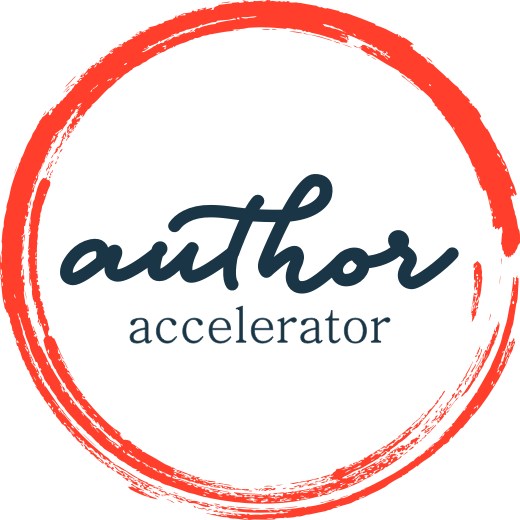More than Their Labels: How to Write LGBTQ+ Characters
Happy Pride Month! Today’s blog post comes to us from Author Accelerator certified book coach Jen Braaksma.
Jen Braaksma
Certified Book Coach
A month after my wedding, one of my best friends told me he was gay.
I was so happy for him that he’d found his inner peace. Relieved, he admitted he waited until after the wedding to tell me.
“Why?” I asked, astounded.
“I didn’t want to ruin your wedding.”
He never could have, not with simply being himself. And he was himself, both before and after our conversation. He remained the fun, excitable person he’d always been. But I also learned an important lesson. He was also hyper-aware of how his own sexuality may play out among others. He was fully himself—with additional layers I was only starting to learning about.
And it’s these layers, this complexity of personality, that we most want to reflect—and respect—when we choose to include LGBTQ+ characters in our stories.
How do we do that? Here are three tips to writing whole, complex, relatable, credible LGBTQ+ characters:
They’re people, first and foremost.
Like my friend, queer characters have names, personalities, histories, and rich, full lives. This means we’re first and foremost writing characters. That they choose to identify as a member of this community is part of their identity—but, like everyone we meet in the pages of a novel, there’s much more to them than just a label.
In my work-in-progress, a literary fantasy novel, I have two female characters who fall in love. They’re bisexual, but I didn’t start out thinking of them that way. They were simply individuals. Calliope is a Greek goddess Muse who inspires artists, but who craves to have her own voice heard. That she falls in love with a woman is important—I’m not dismissing her sexuality—but she falls in love with Fauna, a human storyteller, because of Fauna’s fire and passion—not just because she happens to be a woman.
No one we meet in real life is a cardboard cut-out or stereotype, so there’s no need for any of our LGBTQ+ characters to be, either.
Why gay? For that matter, why straight?
Ask yourself why you’re choosing an LGBTQ+ identity for your character. In fact, you should also ask yourself why you’re choosing a straight identity for your characters, too. No need to default to traditional norms.
What we don’t want is tokenism. Oh, I have a lesbian in my story so I can check off that diversity box! Good stories, of course, don’t work that way.
Good stories work from real, rich characters. Who may or may not identify as LGBTQ+. And if they do, how do you incorporate that into your story? Is their sexuality or gender identity a major plot point? Is this a coming-out story? In which case, their identity (or identity crisis) is front and center. Or maybe you have a love story where two characters are out and proud, but they face backlash in their community. Their identity, too, becomes part of the conflict they have to overcome. But in other stories, your characters may happen to be gay and it’s simply part of who they are.
In my fantasy novel, Calliope and Fauna initially fight their attraction to each other, but not because they’re both women. Their conflicts come from their personalities. Their sexuality is an integral component to the story, but it’s not the conflict.
We want diversity and representation in the novels we read and write. Just make sure you’re making your choices based on respect for your story and your characters—not just because it’s the “thing to do these days.”
Respect your LGBTQ+ characters’ worldview.
It’s damaging to assume we should all treat each other the same way. People who are part of a minority (race, ethnicity, gender, sexuality, etc.) do experience the world differently. The majority cannot ignore that impact.
We all react to what’s happening in the present by drawing on our experiences of the past. If you have LGBTQ+ characters, they’re doing the same.
In my fantasy novel, Calliope has been with other women. How she approaches her attraction to Fauna differs from how Fauna reacts to it, since she has only ever been with men before. They’re both bisexual, but their past experiences shift how they interact.
Even in stories where their LGBTQ+ identity is secondary to the plot, we can’t ignore it. Let’s say Jane is jealous of her best friend’s partner who happens to be a woman. Lori, the best friend, may be more upset about Jane’s anger because Lori may have experienced discrimination in the past—even if that discrimination never came from Jane. The focus is on the relationship between Jane and Lori, but your characterization, plot and story are still informed by Lori’s LGBTQ+ identity.
Double Check
And if you’re not sure you’re reflecting your characters in a respectful light? Don’t hesitate to ask. Seek out a sensitivity reader to ensure you’re not tumbling into your own blind spots.
By remembering that your queer characters are individuals informed by their own history, you’ll ensure you’re creating genuine, authentic characters readers will love.
Jen Braaksma is an author, book coach and teacher in Ottawa, Canada, who has been through the writing wringer—and lived to tell the tale! Her debut young adult fantasy novel, Evangeline’s Heaven, will be published in August 2022. You can find her at jenbraaksma.com.

